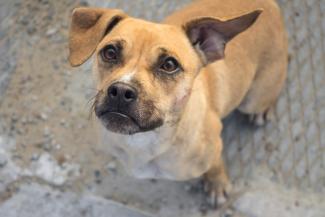
Instructions
Do the preparation exercise first and then read the article. If you find it too difficult, try one of the lower levels. After reading, do the exercises to check your understanding.
Preparation
Before you read the article, do this exercise. It will help you to understand some of the more difficult words.
Small animals like birds, squirrels, mice and insects are a common sight in many cities and towns. But in recent years, the world's press has been full of reports of wild animals coming into cities in bigger and bigger numbers. There have been bears in Vancouver parks, leopards on the streets of Mumbai and wild pigs in gardens in Berlin. What happens when bigger animals come into our cities? Are they welcome or are they considered a danger or a pest?
Often wild animals come into cities to look for food. In Cape Town, South Africa, baboons have started coming into residential areas on the edge of the city to feed. They open rubbish bins and eat fruit from gardens and orchards. Some brave baboons have even come into people's houses and taken food from kitchen cupboards and fridges! Baboons can be aggressive and have attacked a lot of pet animals, so understandably, many city residents don't welcome their presence. The city can be a dangerous place for baboons too. Some have been injured or killed in car accidents and others have been electrocuted as they played with electric cables. Baboons are an endangered species and to save them and minimise conflicts between humans and baboons, the city council has employed a team of Baboon Monitors. The monitors' job is to chase baboons out of urban areas or catch them and release them in the countryside. This policy has had some success, though it is proving hard to stop baboons from coming back to the city once they see it as a source of easy food.
In Berlin in Germany, groups of wild pigs often come into the suburbs to look for food. They dig up parks and gardens looking for roots, fungi, insects and other small animals to eat. Apart from damage to parks and gardens, the pigs have also caused several traffic accidents as they are slow to move off roads when cars are approaching. In spite of this, some city residents welcome the pigs and have been giving them food. They argue that pigs have been coming into the city for centuries and that people should learn to live with them. This attitude was not shared by the city council. Their first reaction was to employ a group of hunters to shoot young pigs. Many city residents complained that this was unnecessarily cruel and there were heated arguments between hunters and animal lovers. In response to protests, the city council decided to take more peaceful action against pigs. Instead of shooting them, they have put up fences and made it illegal to feed the pigs. Time will tell if this strategy works, though it may be a losing battle as warmer winters mean that pig numbers are greater than in the past.
One of the most interesting cases of wild animals living in a city are the wild dogs of Moscow. In Moscow, there are approximately 35,000 wild dogs living on the streets. Some of the dogs were born wild, while others are pets that have been abandoned by their owners. Some dogs live alone and others live in packs. In 2010, scientists studied the dogs and found that the dogs have adapted remarkably successfully to urban life. They have learned that it is safer to cross the street with people and some dogs appear to understand traffic lights. Dogs that live in packs have learnt that humans are more likely to give food to smaller, cuter dogs so those dogs are sent to beg for food for the whole pack. Some dogs have even learnt to use the city's metro system to get from one part of their territory to another! Scientists are not sure how the dogs know when to get off the train. One idea is that they use their excellent sense of smell and have learnt to recognise the scents of their favourite destinations. Another possibility is that they have learnt to recognise the names of stations they hear in announcements. Either way, metro passengers have now got so used to the sight of dogs on the trains that they travel largely unnoticed by locals. Many city residents have grown fond of the dogs. Some people feed them and others have built shelters to help the dogs survive the brutally cold Moscow winters.
Some animals, like the dogs in Moscow, have adapted very well to city life. For others, the city is a dangerous place and it is difficult for animals to live in harmony with humans. It would be a shame to hurt or kill animals when they come into cities to look for food. Hopefully, city councils, conservationists and city residents can work together and find imaginative ways to keep bigger animals out of cities without harming them.
Robin Newton
Does your town or city have any problems with wild animals?

Comments